Abstract
Nicotinate has been postulated to interfere with the binding of O2 to ferrous leghemoglobin in soybean (Glycine max) root nodules. For such a function, the levels of nicotinate in nodules must be sufficiently high to bind a significant amount of leghemoglobin. We have measured levels of nicotinate, nicotinamide, and leghemoglobin in soybean nodules from plants 34 to 73 days after planting in a glasshouse. On a per gram nodule fresh weight basis, levels between 10.4 and 21 nanomoles for nicotinate, 19.2 and 37.8 nanomoles for nicotinamide, and 170 to 280 nanomoles for leghemoglobin were measured. Even if all the nicotinate were bound to ferrous leghemoglobin, only 11% or less of the total leghemoglobin would be unavailable for binding O2. Using the measured levels of nicotinate and a pH of 6.8 in the cytosol of presenescent soybean nodules, we estimate that the proportion of ferrous leghemoglobin bound to nicotinate in such nodules would be less than 1%. These levels of nicotinate are too low to interfere with the reaction between ferrous leghemoglobin and O2 in soybean root nodules.
Full text
PDF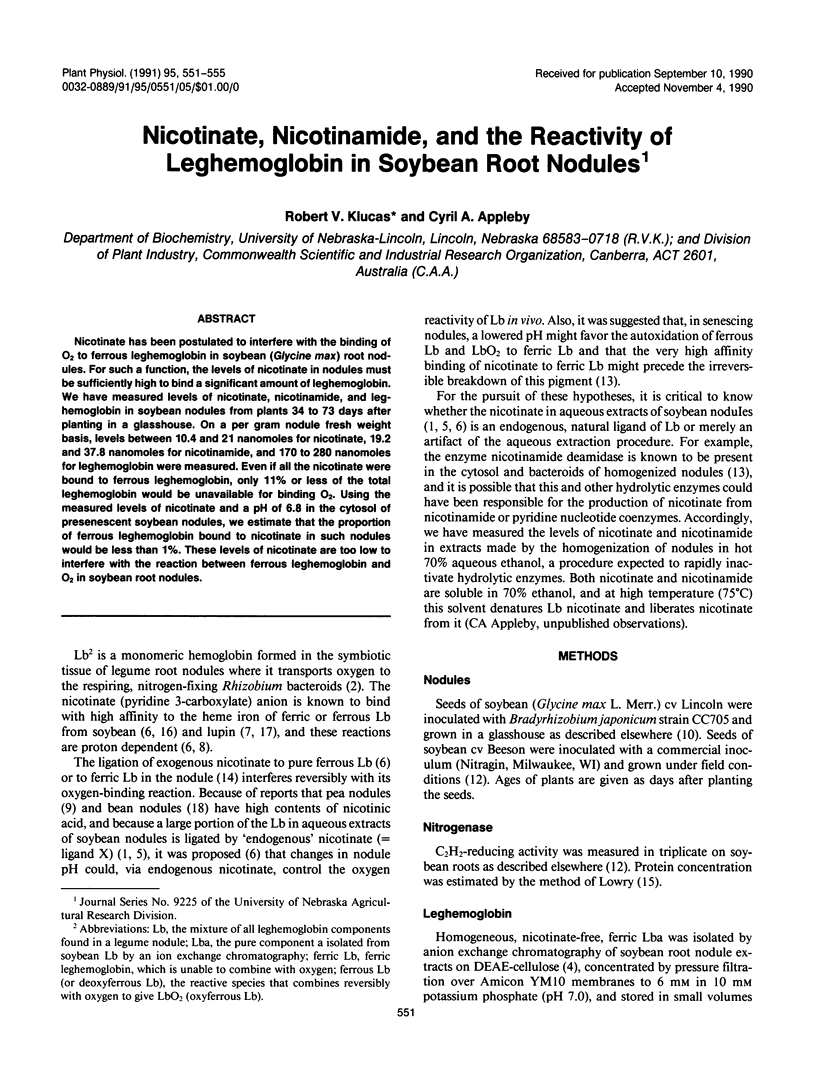
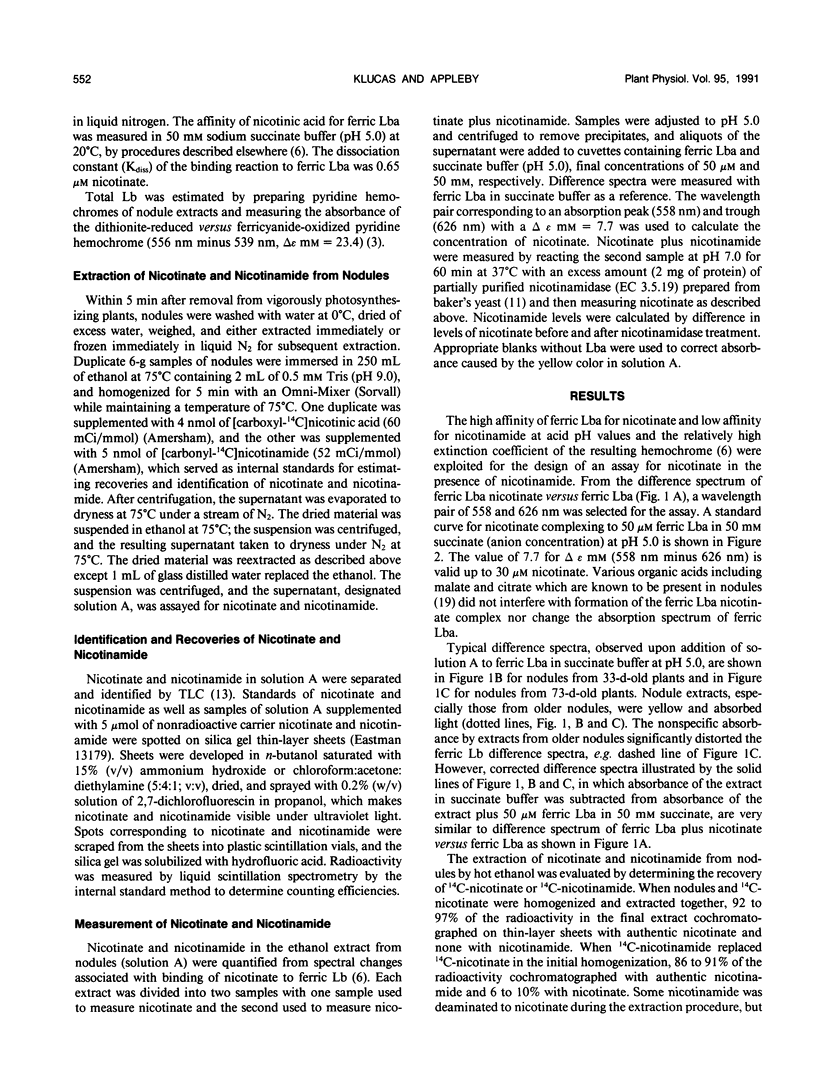
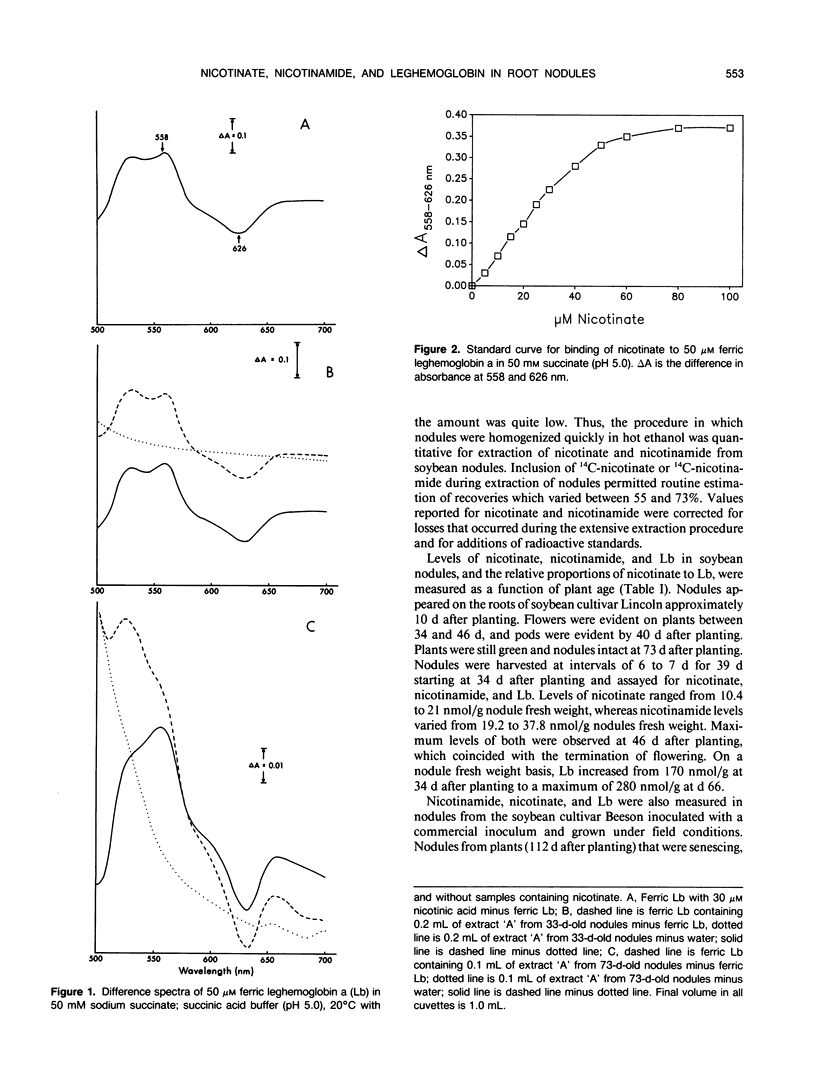
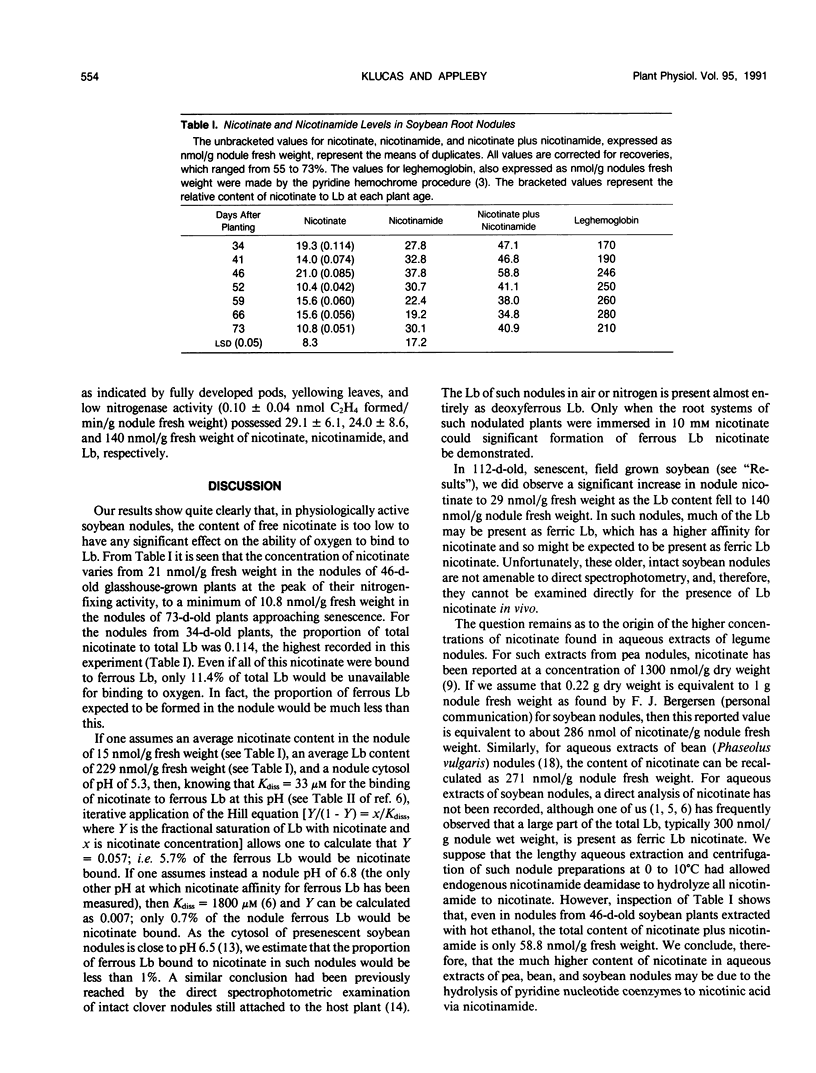
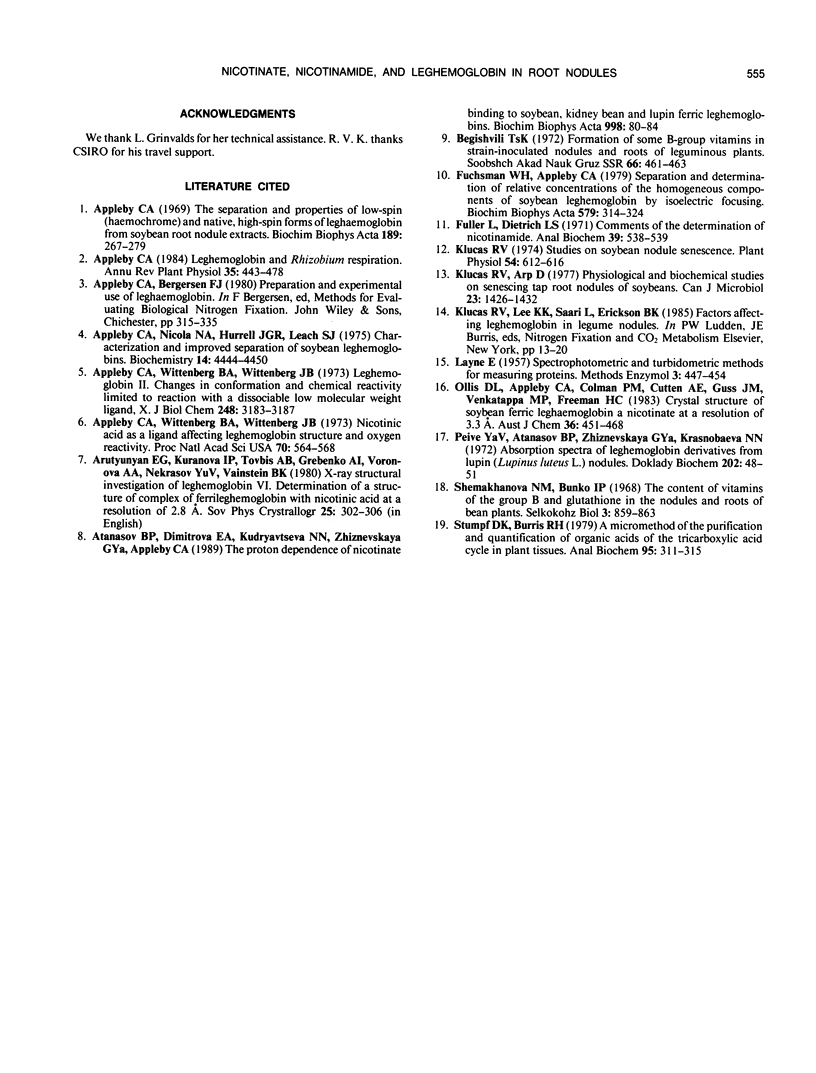
Selected References
These references are in PubMed. This may not be the complete list of references from this article.
- Appleby C. A., Nicola N. A., Hurrell J. G., Leach S. J. Characterization and improved separation of soybean leghemoglobins. Biochemistry. 1975 Oct 7;14(20):4444–4450. doi: 10.1021/bi00691a016. [DOI] [PubMed] [Google Scholar]
- Appleby C. A. The separation and properties of low-spin (haemochrome) and native, high-spin forms of leghaemoglobin from soybean nodule extracts. Biochim Biophys Acta. 1969 Oct 21;189(2):267–279. doi: 10.1016/0005-2728(69)90053-x. [DOI] [PubMed] [Google Scholar]
- Appleby C. A., Wittenberg B. A., Wittenberg J. B. Leghemoglobin. II. Changes in conformation and chemical reactivity linked to reaction with a dissociable low molecular weight ligand, X. J Biol Chem. 1973 May 10;248(9):3183–3187. [PubMed] [Google Scholar]
- Appleby C. A., Wittenberg B. A., Wittenberg J. B. Nicotinic Acid as a ligand affecting leghemoglobin structure and oxygen reactivity. Proc Natl Acad Sci U S A. 1973 Feb;70(2):564–568. doi: 10.1073/pnas.70.2.564. [DOI] [PMC free article] [PubMed] [Google Scholar]
- Fuchsman W. H., Appleby C. A. Separation and determination of the relative concentrations of the homogeneous components of soybean leghemoglobin by isoelectric focusing. Biochim Biophys Acta. 1979 Aug 28;579(2):314–324. doi: 10.1016/0005-2795(79)90059-x. [DOI] [PubMed] [Google Scholar]
- Fuller L., Dietrich L. S. Comments on the detemmination of nicotinamide. Anal Biochem. 1971 Feb;39(2):538–539. doi: 10.1016/0003-2697(71)90447-7. [DOI] [PubMed] [Google Scholar]
- Klucas R. V., Arp D. Physiological and biochemical studies on senescing tap root nodules of soybeans. Can J Microbiol. 1977 Oct;23(10):1426–1432. doi: 10.1139/m77-211. [DOI] [PubMed] [Google Scholar]
- Klucas R. V. Studies on soybean nodule senescence. Plant Physiol. 1974 Oct;54(4):612–616. doi: 10.1104/pp.54.4.612. [DOI] [PMC free article] [PubMed] [Google Scholar]
- Stumpf D. K., Burris R. H. A micromethod for the purification and quantification of organic acids of the tricarboxylic acid cycle in plant tissues. Anal Biochem. 1979 May;95(1):311–315. doi: 10.1016/0003-2697(79)90221-5. [DOI] [PubMed] [Google Scholar]


